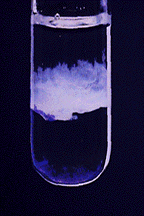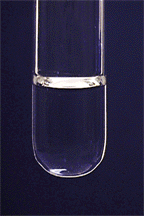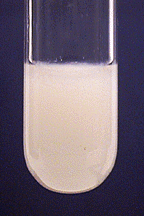
Zinc, Zn2+
Most common oxidation states: +2
M.P. 420o
B.P. 907o
Density 7.13 g/cm3
Characteristics: Bluish-gray metal. Quite active; burns readily in air to form white ZnO and combines with many nonmetals.
Characteristic reactions of Zn2+:
Zinc(II) ion forms complex ions readily.
Aqueous Ammonia:
Zinc(II) ion reacts with aqueous ammonia to precipitate white gelatinous Zn(OH)2:

The zinc(II) hydroxide precipitate dissolves in excess ammonia:

Sodium Hydroxide:
Sodium hydroxide also precipitates zinc(II) hydroxide:

The zinc(II) hydroxide precipitate also dissolves in excess hydroxide:

Potassium Ferrocyanide:
A gray-white precipitate is formed with ferrocyanide ion. The precipitate may be blue-green if traces of iron ions are present:

Note: Many metal ions form ferrocyanide precipitates, so potassium ferrocyanide is not a good reagent for separating metal ions. It is used more commonly as a confirmatory test.
No Reaction:
Cl-, SO42-